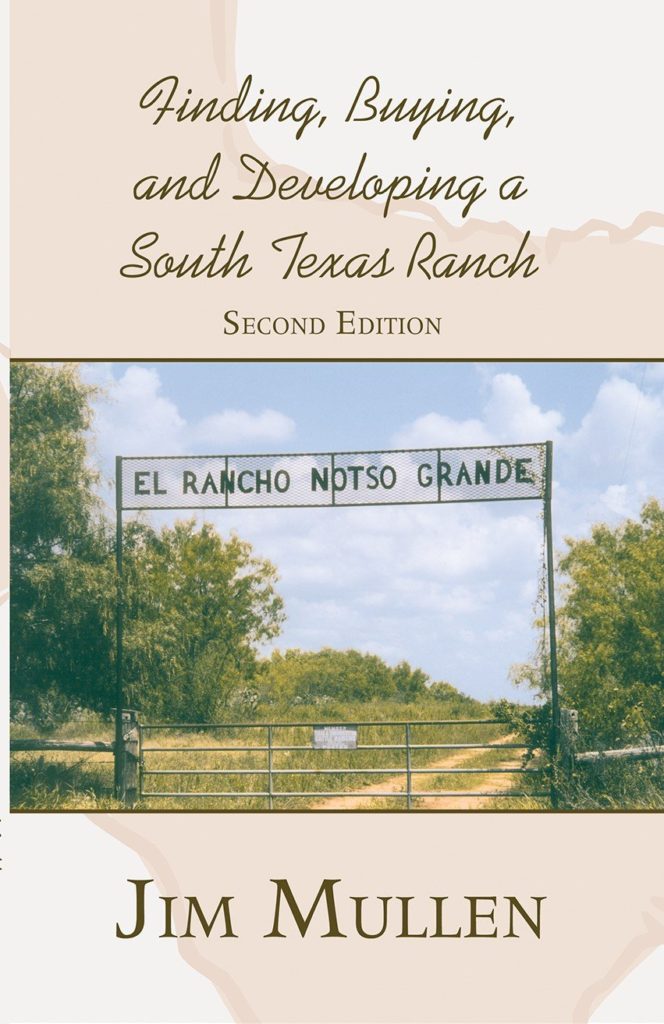As a ranch broker with 30+ years’ experience in South Texas, and a Certified Wildlife Biologist specializing in the red sandy country, my business has been directly impacted by developments over the Eagle Ford Shale. I remember the last oil boom, the Austin Chalk. Although on a smaller scale, that boom occurred over much of the prime quail/deer country of Frio, La Salle, Dimmit and Zavala Cos. Overnight, ranches that were for sale with minerals suddenly were taken off the market, were offered without minerals, or the asking prices were greatly increased. The boom died out and over time, ranches came up for sale with some minerals offered, some even offering 100%, and times once again were good for the buyer.

Now the Eagle Ford Shale boom has been reduced to a shadow of itself by low oil prices. What was predicted to last 100 years lasted 8 and the rigs are all but gone from the horizon. But is that really “it” for the Eagle Ford? As one looking in from the outside with a vested interest, I have watched the rigs leave as new hotels were completed, new truck stops open just as all the trucks were leaving. It’s quieter now, but all the noise, traffic, and yes, money will be back as soon as oil prices climb above $60 per barrel.
The ranch real estate market in the Eagle Ford changed somewhat, but asking prices for ranch land never really reflected the “play money” of the initial leasing period. For the most part, sales in the Eagle Ford just stopped as landowners no longer needed to sell or were waiting to see what was coming next. Oil companies leased the land, often for more than it was worth, rather than buy it outright, so landowners with any mineral interest were sitting pretty. Landowners without any mineral interests tried to sell, but there were no takers with all the traffic and no end in sight. No surprise, but sales actually increased outside the oil field, as mineral owners needed to invest in something, but could not find anything with minerals in the play. Deep South Texas had some great sales as did the Hill Country. Kerr and Gillespie Cos. had a lot of activity and prices there rose dramatically with refugees from the Eagle Ford looking to re-invest in land. Now with the boom on pause, ranches are slowly coming up for sale in the EFS, sometimes with minerals.

What impact did the Eagle Ford have on the land itself in the area of drilling activity? Wildlife was certainly impacted by the traffic, the seismic senderros cut with loud mulchers, and the new roads, not to mention 24 hour noise at drilling sites. Unimaginable amounts of water are needed in fracking and many wells were drilled into the Carrizo aquifer to support drilling activities. Experts assured the populace the aquifer could stand the drain, but some ranches were in fact left without well water as the static level of the Carrizo dropped below economic pumping levels in some areas. Surface water over the region was greatly increased, too, as frac ponds were built to hold the “cushion” of water needed to frac. Some existing stockponds were enlarged into lakes for this purpose and remain today, while frac ponds for the most part have been cleaned up leaving a bare spot on the ground. Speaking of cleanup, for the most part, the oil companies did a good job of cleaning up after themselves. Some did not, leaving plastic and trash across a wide swath downwind of the drilling sites. Probably the biggest change in ranch land south of San Antonio is the scarring due to roads and pad sites. Again, some were restored as required by leases written by mineral owners thinking long-term. Some were simply bladed level and left to Mother Nature. Tons of gravel were laid to ensure all-weather access and these gravel roads and pad sites are going to impact the landscape for many years, whether they are used or not.

So can you buy a ranch in the EFS without minerals and have any confidence it will be enjoyably productive for you? I would say yes, with some conditions. First of all, are you going to get any minerals? Ten years ago, we really did not think much about mineral conveyance. The consensus was, the exploration of the Austin Chalk had discovered all there was and oil was no longer important. As I said, ranch land is again trading in the EFS but the mistake made after the Austin Chalk boom of thinking that’s all there is will not be repeated as we now know new technology allows oil companies to produce oil/gas from strata heretofore thought to be uneconomical. Now most landowners are keeping what they own in expectation of future exploration and have a much better sense of what they own. Buyers are hiring their own landmen to research minerals, even if the seller says he does not own any. This is because with the potential return of the oil field, who owns the minerals has become very important to a surface-only buyer. The mineral owners negotiate the leases and only they can protect the surface during the negotiations of the lease; oil companies won’t. Make no mistake, minerals are dominant in Texas, meaning the mineral owner, and his partner the oil company, can go pretty much anywhere and do pretty much anything they need to do to explore for and produce oil/gas. A surface owner without any mineral interests must go hat in hand to the mineral owner and ask for protection; where drilling will occur, how the sites will be accessed, ranch security, etc.. If there is production, the land is held by a lease and you need to ask for the Surface Use Agreement (SUA) before you buy. This document is part of any lease and sets forth how the oil companies can use the surface and the water in their exploration. If the tract you are considering is unleased, you need to know who owns the minerals and try to get a sense of how they perceive protection of the surface. Previous leases are public information for the most part and can tell you a lot about the mineral owner and how they perceive surface protection.
Either way, assuming the sleeping giant will one day awaken, can you live with oil/gas production without getting a royalty check to lessen the hassle and loss of privacy? This depends on a multitude of factors and has added a new dimension to assessing land for purchase in the EFS. If leased, by whom is it leased and what is that company’s history of landowner relations? What does the SUA say about surface damages? Water use? What traffic does the ranch have now and what will the traffic be like if/when activity picks up? If not leased, was there any drilling done during the boom? Where does the land sit on the mapped EFS?

As for the land itself, what would be your primary source of water, and can it be impacted by withdrawing enormous quantities if fracking occurs? Are you a bird hunter or a deer hunter? Deer and turkey hunting/management is much more sensitive to the noise and activity of an oilfield than quail. Quail actually benefit from soil disturbance and while a gravel road is a dead zone, the margins gain when it rains and can be managed as weed plots with a disk. Dove, too, profit from soil disturbance, but the added surface water of frac ponds will disperse them. Size of the tract really doesn’t protect you as a 5,000 acre ranch with intense production is just a violated as a 300 acre tract with one well. If you are a cowman, gates may become a tipping point in range management and must be considered.
To conclude, looking for a ranch in the area known as the Eagle Ford Shale has become more complex, even with the slowdown of exploration and production. Do not buy assuming what you see on the showing is how it will be in the future. The potential for untold production remains in the Eagle Ford, waiting for world prices to improve. I would say buy with caution and negotiate as if the next boom was just around the corner; it is.






